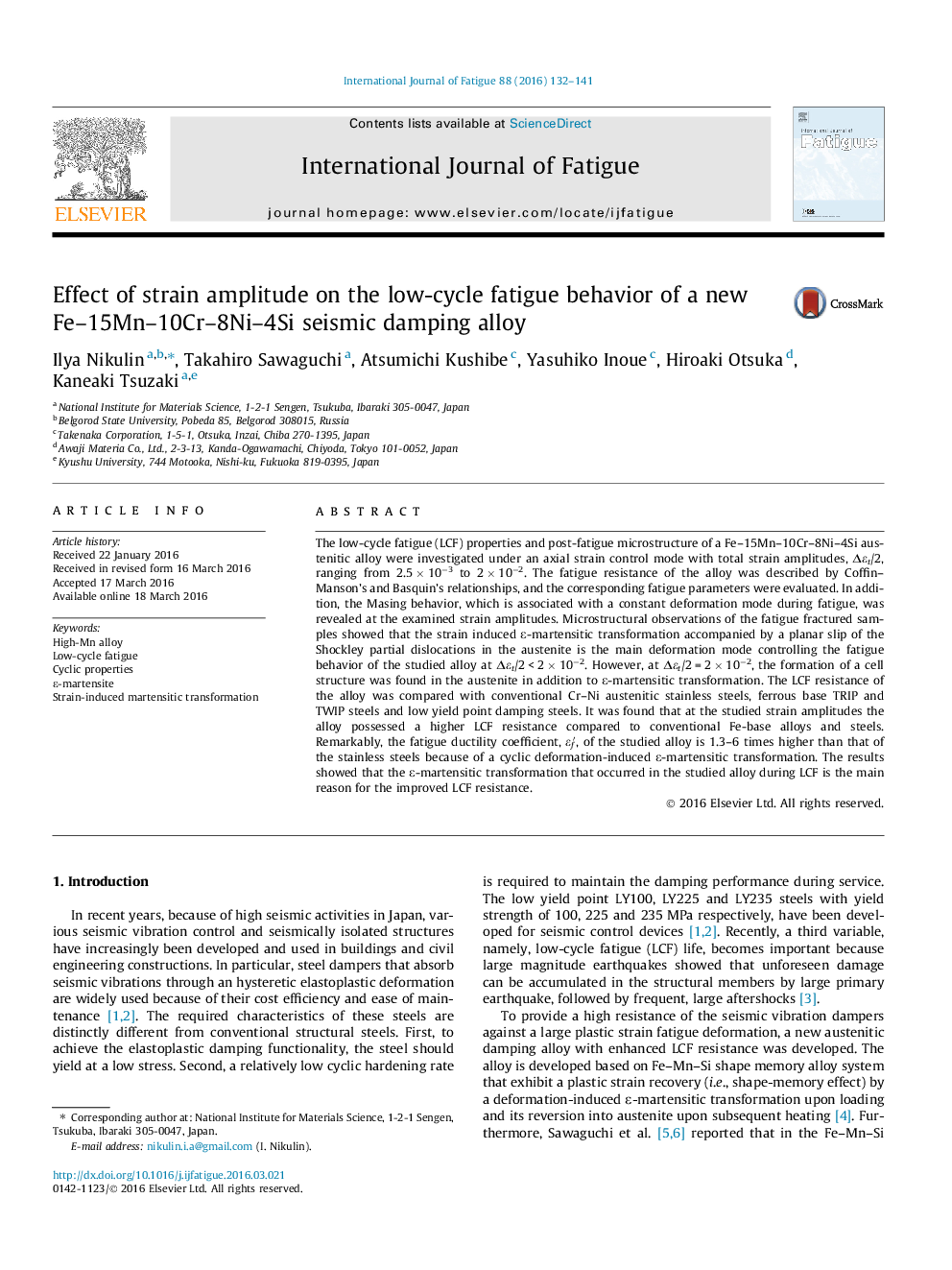| کد مقاله | کد نشریه | سال انتشار | مقاله انگلیسی | نسخه تمام متن |
|---|---|---|---|---|
| 777528 | 1463741 | 2016 | 10 صفحه PDF | دانلود رایگان |

• The low cycle fatigue (LCF) behavior of a new Fe–15Mn–10Cr–8Ni–4Si alloy was studied.
• The fatigue resistance of the alloy was described by Coffin–Manson’s and Basquin’s relationships.
• Fe–15Mn–10Cr–8Ni–4Si alloy shows strain-induced ε-martensitic transformation during LCF.
• The alloy possessed a higher LCF resistance compared to conventional Fe-base alloys and steels.
• ε-martensitic transformation that occurred in the studied alloy during LCF is the main reason for the improved LCF resistance.
The low-cycle fatigue (LCF) properties and post-fatigue microstructure of a Fe–15Mn–10Cr–8Ni–4Si austenitic alloy were investigated under an axial strain control mode with total strain amplitudes, Δεt/2, ranging from 2.5 × 10−3 to 2 × 10−2. The fatigue resistance of the alloy was described by Coffin–Manson’s and Basquin’s relationships, and the corresponding fatigue parameters were evaluated. In addition, the Masing behavior, which is associated with a constant deformation mode during fatigue, was revealed at the examined strain amplitudes. Microstructural observations of the fatigue fractured samples showed that the strain induced ε-martensitic transformation accompanied by a planar slip of the Shockley partial dislocations in the austenite is the main deformation mode controlling the fatigue behavior of the studied alloy at Δεt/2 < 2 × 10−2. However, at Δεt/2 = 2 × 10−2, the formation of a cell structure was found in the austenite in addition to ε-martensitic transformation. The LCF resistance of the alloy was compared with conventional Cr–Ni austenitic stainless steels, ferrous base TRIP and TWIP steels and low yield point damping steels. It was found that at the studied strain amplitudes the alloy possessed a higher LCF resistance compared to conventional Fe-base alloys and steels. Remarkably, the fatigue ductility coefficient, εf′, of the studied alloy is 1.3–6 times higher than that of the stainless steels because of a cyclic deformation-induced ε-martensitic transformation. The results showed that the ε-martensitic transformation that occurred in the studied alloy during LCF is the main reason for the improved LCF resistance.
Journal: International Journal of Fatigue - Volume 88, July 2016, Pages 132–141